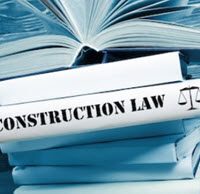Statute of Limitations – Actions Based on the Design, Planning or Construction of Improvements to Real Property

For various types of lawsuits, except for actions seeking to recover real property, Florida provides limitations periods, often referred to as statutes of limitations, in Fla. Stat. 95.11. Basically, these laws limit the time that a plaintiff has to file a lawsuit based on a particular type of claim. Under Fla. Stat. 95.11(3)(c), for example, a plaintiff has four years to bring an action based on the construction of an improvement to real property. What constitutes the construction of an improvement? This is a basic question that needs to be answered in order to determine whether a particular lawsuit or claim is subject to the four-year limitations period.
What Constitutes an Improvement?
Last summer, in Harrell v. Ryland Group, the Florida District Court of Appeals, First District, considered the question of what constitutes an improvement for purposes of the four-year statute of limitations. In this case, the plaintiff was injured when he was climbing up on the pull down stairs of an attic ladder to repair a leak and the attic ladder collapsed. The injured plaintiff brought a negligence action against the company that constructed and sold the home. Specifically, he argued that the defendant failed to ensure that the ladder was installed securely with the proper hardware, and that the defendant failed to verify that the ladder was secure before the home was sold.
Since Florida law itself does not provide a specific definition of improvement, the court referred to the definition of improvement in a well-known legal dictionary (Black’s Law Dictionary) in order to define this term. Under this definition, an improvement as something that is added to property that increases its value, increases its utility, or improves its appearance. Also, under this definition, an improvement need not be permanent.
The court found that the attic ladder was an improvement. The court reasoned that the ladder was an addition to property, and that it provided increased utility. The pull down stairs were described by the court as a convenience. The court also noted that the statute did not require that the improvement, to be classified as an improvement, significantly increase the property’s value or utility, or serve an essential function.
What Constitutes the Construction of an Improvement?
Once the court in Harrell v. Ryland Group decided that the attic stairs constituted an improvement, the next issue to decide was whether the lawsuit was based on the construction of an improvement. Even though the defendant did not actually construct the ladder (it was pre-assembled), the court found that the plaintiff’s action was based on the construction of an improvement since the claim was that the defendant failed to ensure that the ladder was securely installed with appropriate hardware.
For More Information
The court in Harrell v. Ryland Group also noted that in enacting the four year statute of limitations for claims based on the construction of an improvement, Florida lawmakers were aiming to protect engineers, architects, contractors and the like from older “stale” lawsuits and claims. If you are a homeowner or contractor, and have questions about such claims, or other claims based on construction activities or contracts, contact a Fort Lauderdale construction lawyer at Sweeney Law today.
Resource:
scholar.google.com/scholar_case?case=17687589054541879508&q=construction+accident+area&hl=en&as_sdt=4,10&as_ylo=2019
https://www.sweeneylawpa.com/the-law-governing-latent-construction-defects/

